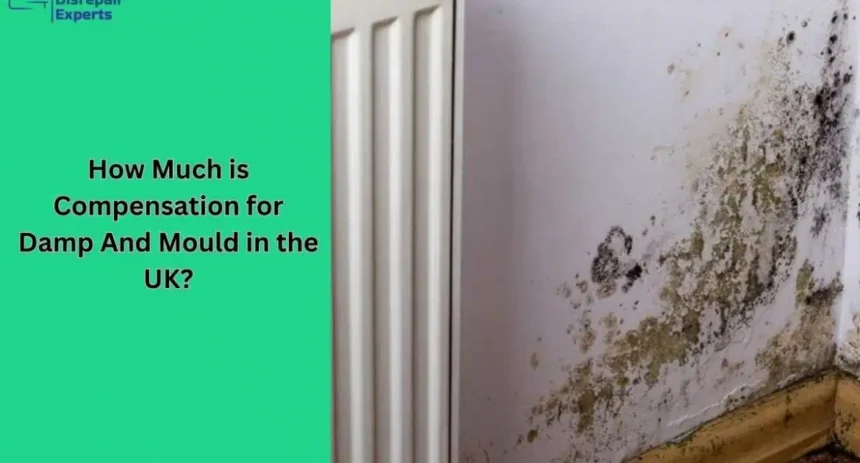Damp and mould in rental properties are common issues in the UK, especially in older homes or poorly maintained buildings. When these problems occur, they can lead to serious health issues, damage to personal belongings, and a reduced quality of life. If your landlord fails to fix the problem after being notified, you may be entitled to compensation for the distress, inconvenience, and health issues caused by the damp and mould. In this guide, we will explain how much compensation you could expect to receive for damp and mould issues and the factors that influence this amount.
1. Understanding Damp and Mould in Rental Properties
Damp and mould are often caused by poor property maintenance, inadequate ventilation, or structural defects. Common causes of damp and mould include:
- Leaks in the roof or plumbing: Water entering the property through leaks can create damp conditions that promote mould growth.
- Condensation: High humidity and poor ventilation, especially in areas like kitchens and bathrooms, can lead to condensation and mould.
- Rising damp: When moisture from the ground rises through the walls of the property, it can cause long-term damage.
- Penetrating damp: Water entering the property from outside due to damaged external walls, windows, or roofs.
If your landlord is aware of these issues but fails to make necessary repairs, you may have grounds to make a housing disrepair claim for compensation.
2. When Can You Claim Compensation for Damp and Mould?
To claim compensation for damp and mould, several conditions need to be met:
- The landlord’s responsibility: According to the Landlord and Tenant Act 1985, landlords are legally required to keep the property in good repair, which includes ensuring it is free from damp and mould.
- Reporting the issue: You must report the damp or mould to the landlord in writing and give them a reasonable amount of time (usually 14 to 28 days) to carry out the repairs.
- Health and discomfort: If the damp and mould have affected your health or made living conditions unbearable, you may be entitled to compensation.
- Failure to fix the issue: If the landlord neglects to address the issue in a timely manner, you can pursue a compensation claim.
3. Factors Influencing Compensation Amount
The compensation you receive for damp and mould will depend on several factors:
a) Severity of the Damp and Mould
- Minor issues: If the mould or damp is localized and has not caused significant damage or health problems, compensation may be lower, ranging from £200 to £1,000.
- Moderate issues: For widespread mould or damp that has caused damage to your belongings or has resulted in discomfort, compensation could range from £1,000 to £5,000.
- Severe issues: If the damp and mould have caused significant health issues (such as respiratory problems, asthma, or other illnesses) or the property has become uninhabitable, you may receive higher compensation, often ranging from £5,000 to £10,000 or more.
b) Duration of the Problem
The longer the damp and mould issue persists, the higher the potential compensation. If the landlord ignored the issue for several months or even years, causing more damage and distress, you may be entitled to more compensation.
c) Health Impact
If the damp and mould have led to health problems, particularly respiratory issues or allergic reactions, compensation will reflect the seriousness of the impact on your health. You will need medical evidence (such as a doctor’s letter) to support your claim. Compensation in these cases can range from £1,000 to several thousand pounds, depending on the severity of the health issues.
d) Inconvenience and Distress
Even if no health issues occurred, compensation is often awarded for the distress and inconvenience caused by living in poor conditions. This can include emotional distress, disruption to daily life, and the difficulty of living with ongoing mould problems. Compensation for inconvenience may range from £500 to £3,000, depending on how much your living situation was affected.
4. How to Make a Damp and Mould Compensation Claim
If you are living in a rental property with damp and mould issues, follow these steps to make a claim:
- Report the issue: Notify your landlord in writing as soon as you notice the damp and mould. Keep a copy of your communications.
- Document the damage: Take photos and videos of the damp or mould, and make a note of when the problem began and how it has progressed.
- Give the landlord time to fix the issue: Allow your landlord a reasonable amount of time to repair the problem (usually 14-28 days).
- Seek medical advice: If the mould has affected your health, see a doctor and keep records of any medical treatment or advice received.
- Seek legal advice: If the issue is not resolved and you believe you are entitled to compensation, seek legal advice or consult a claims expert who specializes in housing disrepair cases.
- Proceed with a claim: If necessary, file a formal compensation claim with the help of a solicitor or claims specialist.
5. Conclusion
Damp and mould can cause serious disruption to your life, both physically and emotionally. If your landlord fails to address these issues, you have the right to seek compensation. The amount of compensation will depend on various factors, including the severity of the issue, the impact on your health, and how long the problem persists. Always document the disrepair, report the issue promptly, and seek legal advice if you believe you are entitled to compensation. By following these steps, you can ensure that your living conditions are improved, and that you are fairly compensated for the distress caused by damp and mould.


